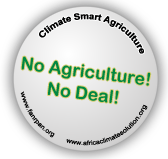 ACCID RSS newsfeed ACCID RSS newsfeed
Has the Kyoto protocol failed Africa?
02 December 2011, BBC News
URL: http://www.bbc.co.uk/news/world-africa-15989873
On the outskirts of Durban, rubbish is being turned into energy and cash. A neat trick which the architects of the Kyoto Protocol can lay claim to.
The Mariannhill Landfill is converting methane gas emitted by rotting rubbish into energy - and in doing so, providing an alternative to fossil fuels.
Surrounded by man-made wetlands and forests, this rubbish dump is run with pride by John Parkin, deputy plant manager at eThekweni Municipality.
"Most people expect some horribly smelly landfill. But on a Sunday we have people who come to watch the birds," he says, before pointing out some sacred ibis birds taking a drink.
But Mr Parkin has a problem - one he wants the diplomats and politicians gathered in Durban for the UN's latest climate change conference to hear about.
He would like Africa to get a better crack at getting climate finance and in turn wants the money that he feels his project has earned.
"We started this project in July 2003, commissioned it in November 2006, and registered with the Clean Development Mechanism in December 2006," he explains with an ease that suggests he has often mentioned these specific dates.
The Clean Development Mechanism (CDM) is the financial tool built into the Kyoto Protocol to encourage the construction of projects in developing countries that lead to a measurable reduction in greenhouse gases.
For each ton of carbon dioxide (or other greenhouse gas such as methane) prevented from going into the atmosphere, the project owner receives a credit that can be sold to polluting companies in the rich nations who use it to offset their own emissions.
The price of the credits fluctuate like any market price, but they are currently around $8-9 (£5-6) each.
It sounds relatively straightforward. But five years after registering with the UN, Mr Parkin is still waiting to receive a single carbon credit.
"The process is very convoluted and extremely frustrating and pedantic," he says with a sigh. "Each little thing that happens seems to take an extraordinary length of time."
Mr Parkin admits he may initially have underestimated the amount of work that was needed to go into satisfying the CDM criteria. He suggests even modest sized projects require two or three people whose sole focus is ensuring all the paperwork is filed.
That is an expense that many African companies and governments simply can't afford. Of the 3,511 projects registered with the UN by October this year, just 72 were in Africa.
Paperwork
"I don't like to use the term failed, but the CDM has certainly not met expectations," suggests Aly Abou-Sabaa from the African Development Bank.
"There's a combination of reasons. Firstly, the complexity of being able to access it. On the other side, there's a large group of African countries who have the potential, but not the capacity - they do not have the institutions adequately staffed with the skills."
Other regions have been much more successful in using the scheme to get funding and investment. China is by far the biggest recipient of carbon credits - some 330m a year. India and neighbouring nations in the Asia Pacific have also warmly embraced the CDM.
That makes sense, argues Martin Hession, chair of the CDM's executive board.
"Most of the emissions in the world are in countries like China, India and the major emerging economies. So inevitably CDM investment is going to go where reductions are large and perhaps cheap to achieve," he says.
In other words, Africa's relatively small emissions account for their bit-part status in CDM.
But Africa, the world's poorest continent, is responsibly for more than 7% of all carbon dioxide emissions in the developing world. That is considerably more than the 2% of the CDM market it is receiving.
Brazil, a country with lower carbon emissions than South Africa, is cashing in over 23.5 million carbon credits a year thanks to hundreds of CDM projects. South Africa's small number of projects are raising just 3.5 million credits a year.
'No communist cake'
"We're not blind to underdevelopment or unfairness in the world," stresses Mr Hession, but he's keen to point out the CDM is operated as a competitive market.
"It's not a communist-style dividing of the money into country-sized cakes or emission-sized cakes. It's a market mechanism that will reward innovation and reward stable investment environments."
But for Mr Abou-Sabaa there needs to be a greater recognition that Africa is not able to compete with the major emerging economies when it comes to attracting business.
"If you put Sierra Leone and Liberia on the same starting line as India, you can't expect them to run at the same pace," he says.
Changes to the CDM are likely to be announced at the end of the COP17 summit - and they are expected to include amendments designed to help Africa.
But at the Mariannhill Landfill site, Mr Parkin is awaiting a more personal announcement.
In the next day or two, his phone will ring and he will find out whether he has finally been granted some carbon credits.
|

